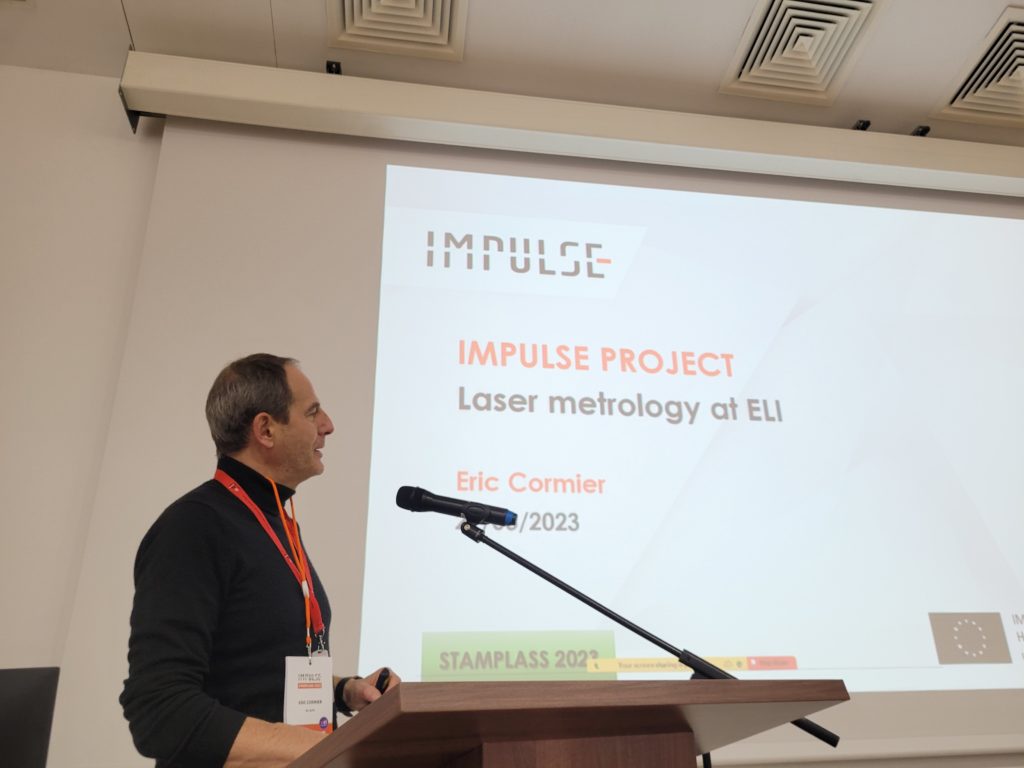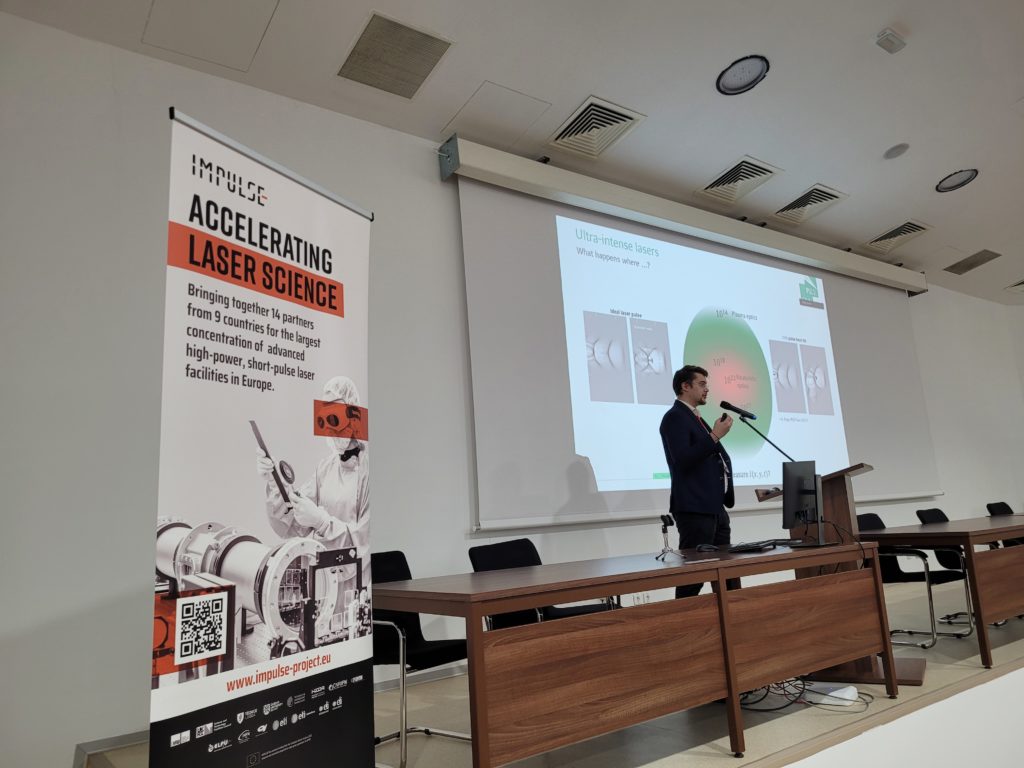
IMPULSE workshop on standardisation of metrology procedures for lasers brought together science, industry, and academia
IMPULSE Work Package 3 organised the STAMPLASS 2023 workshop at the end of March hosted by the ELI-NP Facility in Magurele, Romania. Reliable solutions and accepted protocols for the metrology of high-peak power, high-repetition rate lasers and secondary sources are critical for enabling excellent research and user access at ELI. With more than 100 project partners, industrial representatives and academic participants contributing, the lectures and round table discussions provided valuable input for the WP’s work moving forward and for ELI as a whole.
The STAMPLASS 2023 workshop (Standardisation of metrology procedures for lasers and secondary sources) aimed at creating a bridge between conferences focusing on scientific outcomes and classic industrial trade fairs that are intended to commercialise the products coming out of those results. The goal of this event was to address in detail the metrology and standardisation technologies that make possible the scientific success of the Extreme Light Infrastructure and to facilitate technology transfer through building close cooperation with the industry as a key collaborator in this endeavor. This particular area presents a challenging task for each ELI Facility, an unseen part of the scientific iceberg and often under-represented in the major conferences.

“This workshop revolved around creating well-defined and recognised measurement procedures for the ELI Facilities to characterise laser pulses and secondary source parameters,” says András Makai, Leader of Work Package 3, Head of Systems Engineering at ELI ALPS. “We realised that this topic would be important to discuss beyond ELI, and the involvement of the whole laser and secondary source community would multiply our efforts. Excellent progress was achieved to collect and define the parameters of the sources to be measured and describe the procedures, all thanks to our industrial contributors and key WP partners Ludwig Maximillian Universitaet (LMU), Helmholz Zentrum Dresden Rosendorf (HZDR), and Centro de Laseres Pulsados (CLPU).”
The programme included seven topical reviews of the metrology at Extreme Light Infrastructure Facilities, addressing all the primary and secondary sources that will be available for the users: lasers, XUV and attosecond pulses, x-rays, gamma rays, terahertz, hadrons, electrons – approached in 40 talks and 15 poster presentations. An invited talk on the laser metrology was given online from the USA by prof. Rick Trebino, the inventor of the pulse measurement technique known as FROG. The presentation by the Romanian Agency for Standardization, ASRO, explained why and how to advance with international metrology standardisation from the administrative procedures perspective.

To facilitate the conversation, dedicated round table discussions were organised during STAMPLASS to provide room for exhange and discussuion which is important for such fields. Joint metrology campaigns were proposed, gaps in the metrology were identified and new parameters were proposed to be included in future studies. As an overall outcome, the feedback of the participants was that the workshop was very valuable and that it shall have a continuation, probably in the form of a bi-annual conference.
“STAMPLASS opened up a very important conversation with the interested community on metrology standards of critical laser and secondary sources parameters, and we believe that collecting and analysing the contributions from the participants will be higly valuable for all of us,” adds Daniel Ursescu, local scientific organiser and deputy head of the Laser System Department at ELI-NP. “The results of the workshop consolidate the work on the ELI-led metrology standardisation and the dissemination of the metrology-related work, and we also initated a dedicated special issue in the Photonics journal ‘Metrology at High-Power Laser Facilities: Primary and Secondary Laser-Driven Sources’ to publish the related articles.”